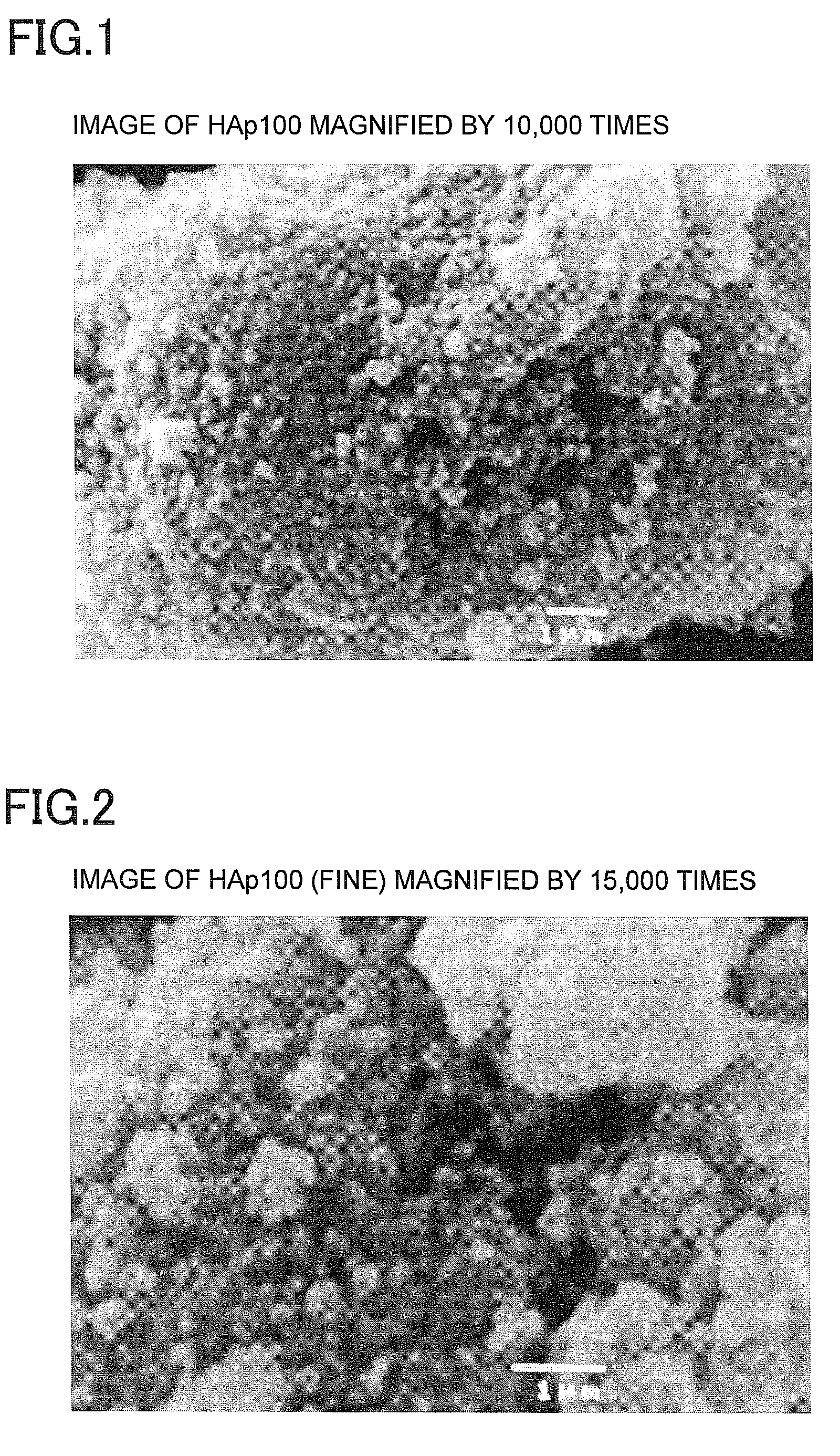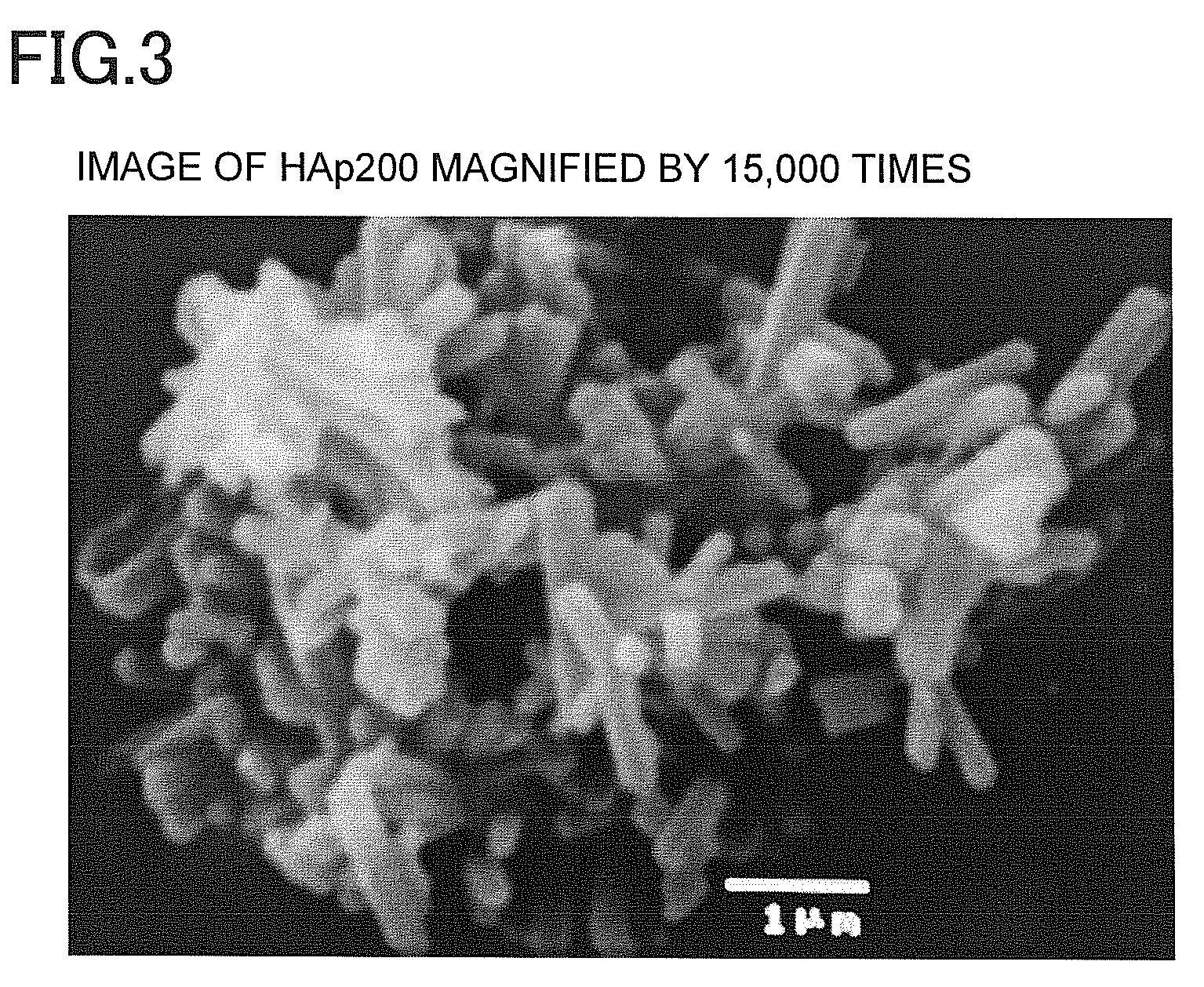Chemically-curing type glass ionomer cement
a glass ionomer cement and chemical curing technology, applied in the field of glass ionomer cement, can solve the problems of large thermal expansion difference between dentin and this cement, lack of mechanical strength of carboxyl cement, and lack of mechanical strength, so as to improve the mechanical strength of gic, reduce the curing time, and strengthen the mechanical strength
- Summary
- Abstract
- Description
- Claims
- Application Information
AI Technical Summary
Benefits of technology
Problems solved by technology
Method used
Image
Examples
example 1
(3) Example 1
[0068]This example is an example according to the present invention. In this example, as HAp to be added into GIC, HAp100 (fine), which is used in the comparative example 2, is prepared by pulverization into ultra-fine particles with a mean particle diameter of 3 to 20 μm by using an automatic mill (electric dancing mill, Nitto Kagaku Co., Ltd). The thus-prepared HAp100 (fine) is used. This hydroxy apatite is porous, and the ultra-fine particles of several nanometers to several hundreds nanometers are adhered on the surface of the hydroxy apatite. FIG. 2 shows an electron micrograph of this HAp100 (fine) magnified by 15,000 times.
example 2
Addition / Mixture Amount of Apatite Relative to GIC Glass Powder
[Material and Method]
[0137]A method similar to the example 1 described above is conducted by using IX powder, IX liquid, and HAp100 (fine). That is, HAp100 (fine) is mixed at 5% by weight, 8% by weight, 11% by weight, 16% by weight, 19% by weight, 25% by weight, 30% by weight, and 35% by weight relative to IX powder, After thus prepared, the mixed sample powder is kneaded with IX liquid at a P / L rate of 3.6. At 24 hours after the kneading process, the three-point bending test is performed. The results of this three-point bending test are as follows.
[0138][Results]
[0139]In the cases of the mixture amounts (% by weight) of HApl 00 (fine) relative to IX powder, the results of this three-point bending test (measurement values MPa) are as follows.
[0140]
5% by weight27.5 MPa8 to 30% by weight35 to 40 MPa35% by weight28.1 MPa
[0141]It is concluded based on the above results that addition / mixture of HAp100 (fine) at about 5% by we...
PUM
| Property | Measurement | Unit |
|---|---|---|
| mean diameter | aaaaa | aaaaa |
| mean diameter | aaaaa | aaaaa |
| mean diameter | aaaaa | aaaaa |
Abstract
Description
Claims
Application Information
 Login to View More
Login to View More - R&D
- Intellectual Property
- Life Sciences
- Materials
- Tech Scout
- Unparalleled Data Quality
- Higher Quality Content
- 60% Fewer Hallucinations
Browse by: Latest US Patents, China's latest patents, Technical Efficacy Thesaurus, Application Domain, Technology Topic, Popular Technical Reports.
© 2025 PatSnap. All rights reserved.Legal|Privacy policy|Modern Slavery Act Transparency Statement|Sitemap|About US| Contact US: help@patsnap.com



